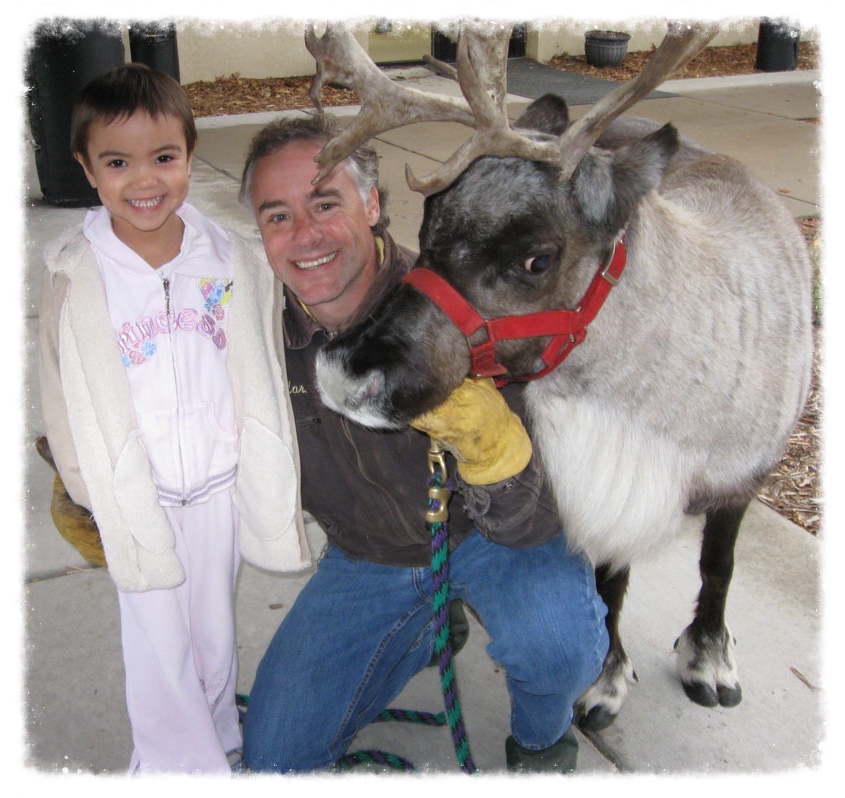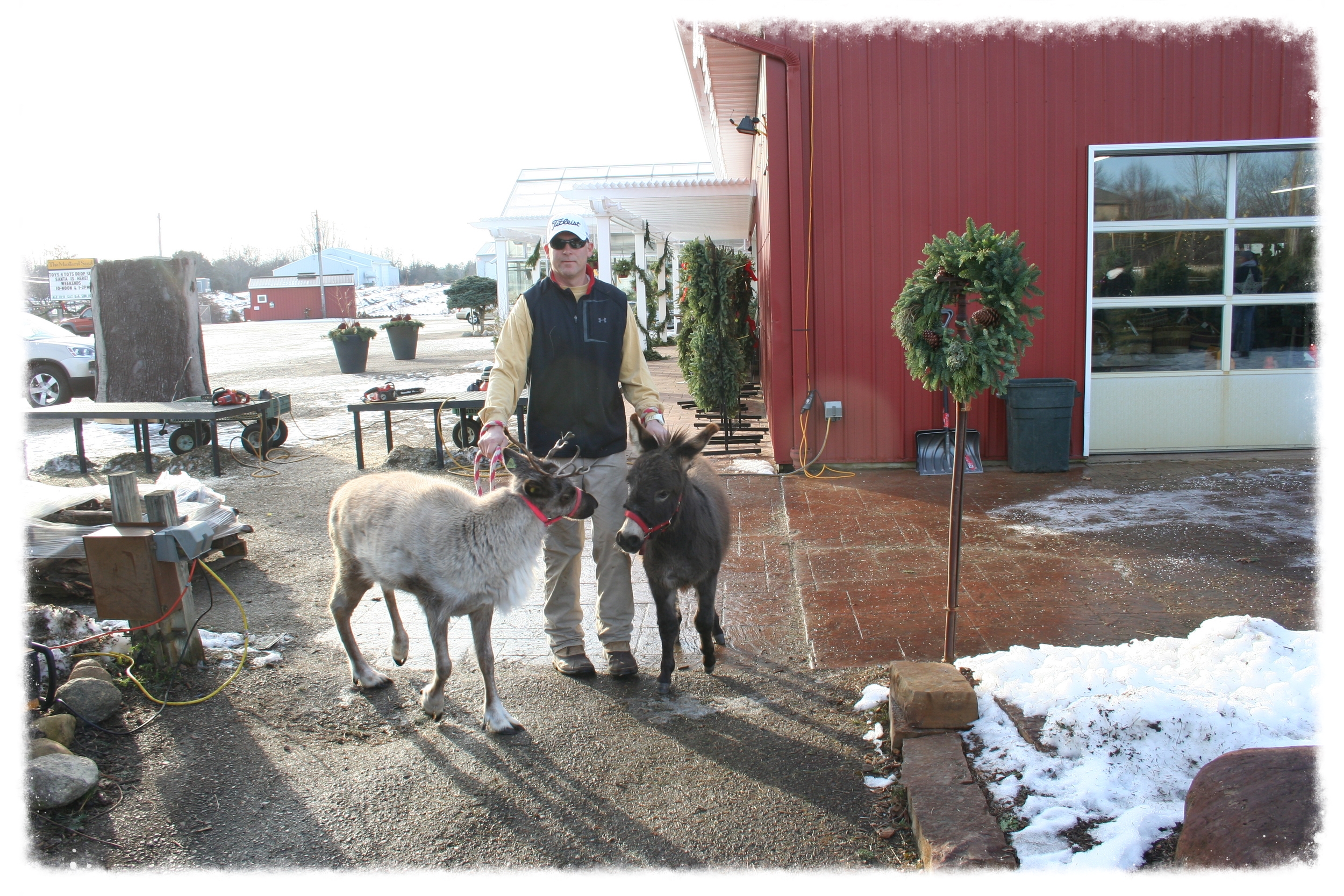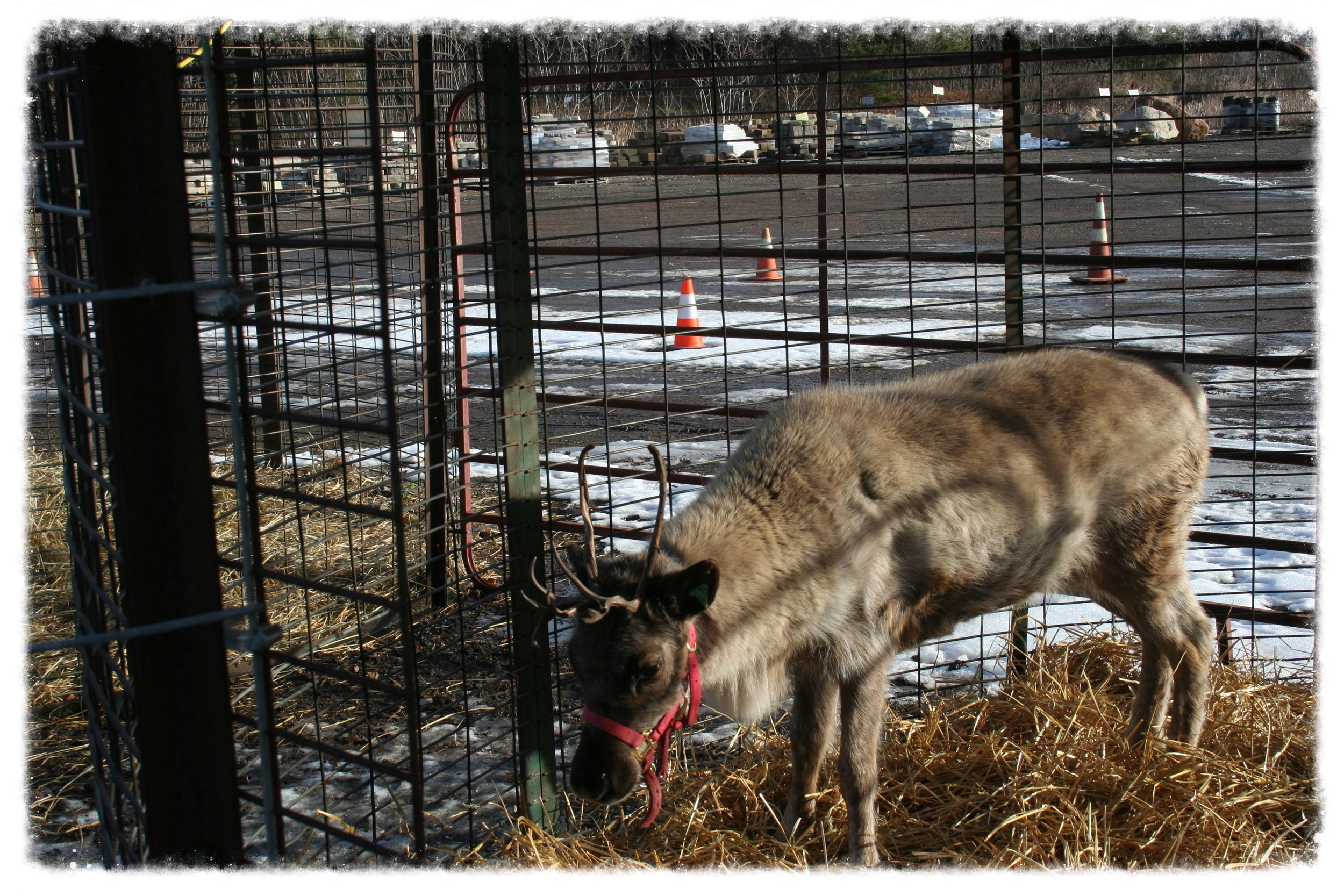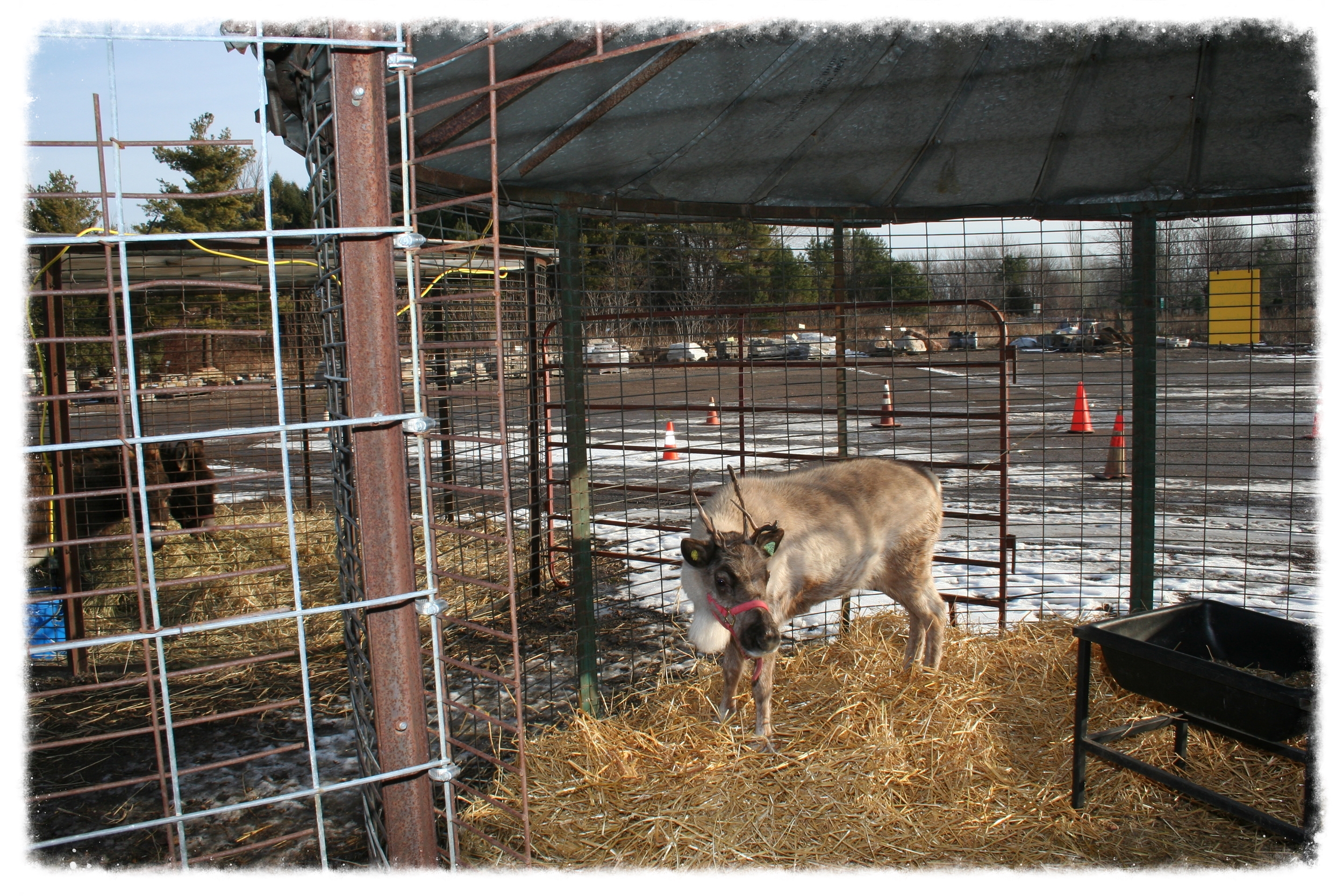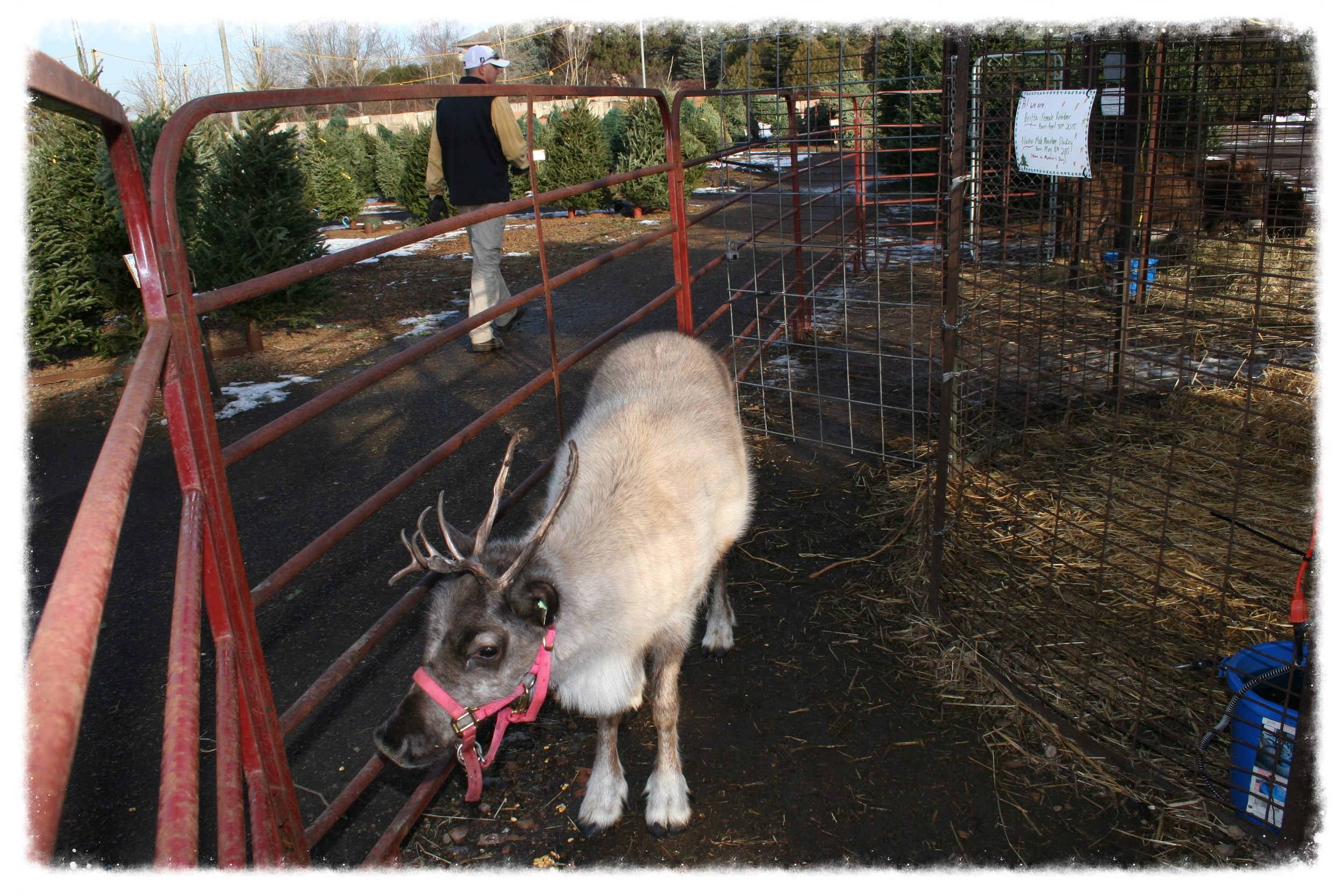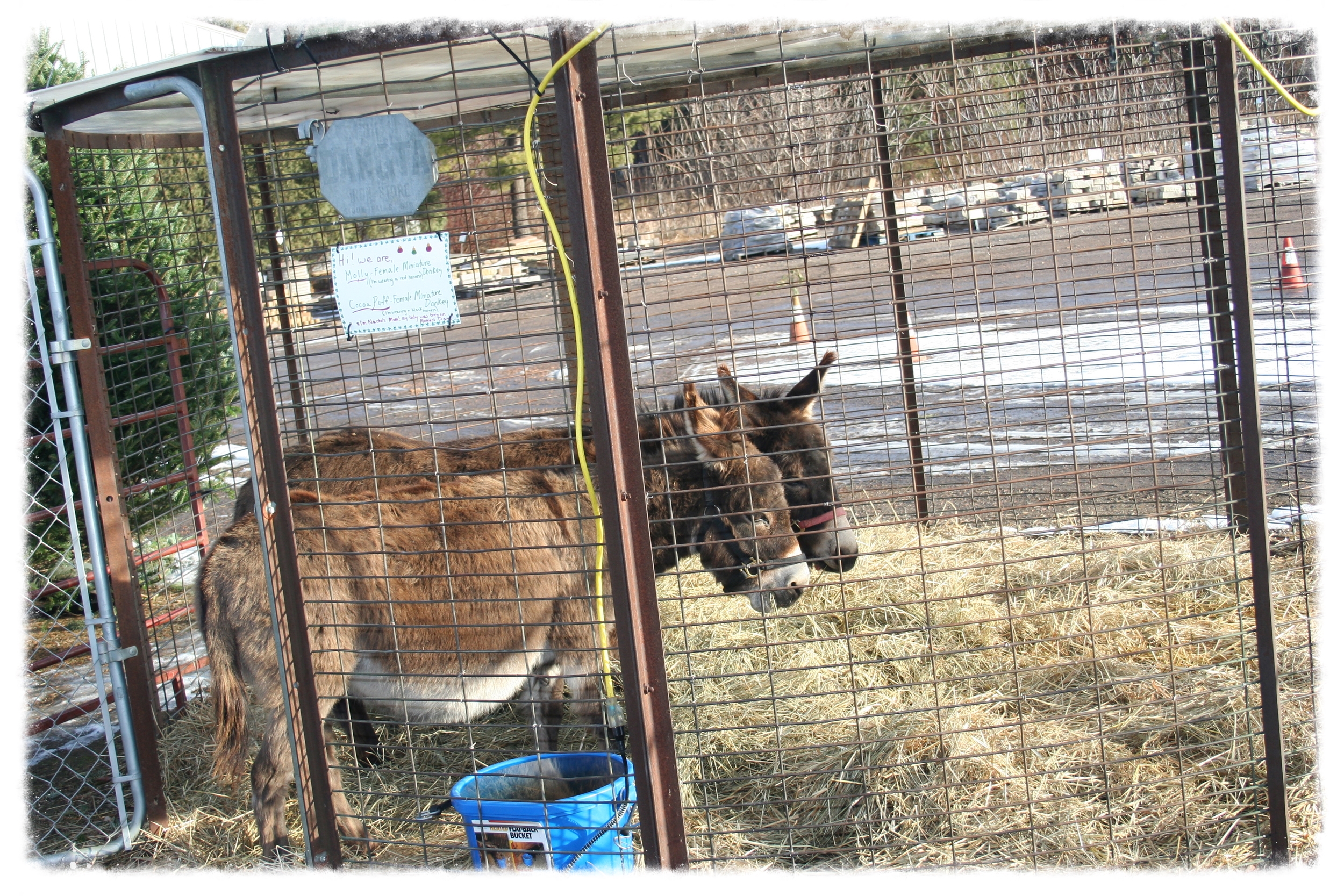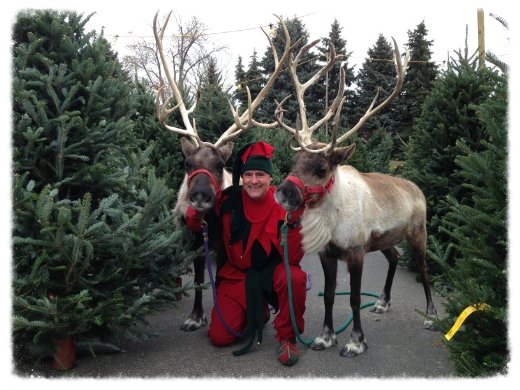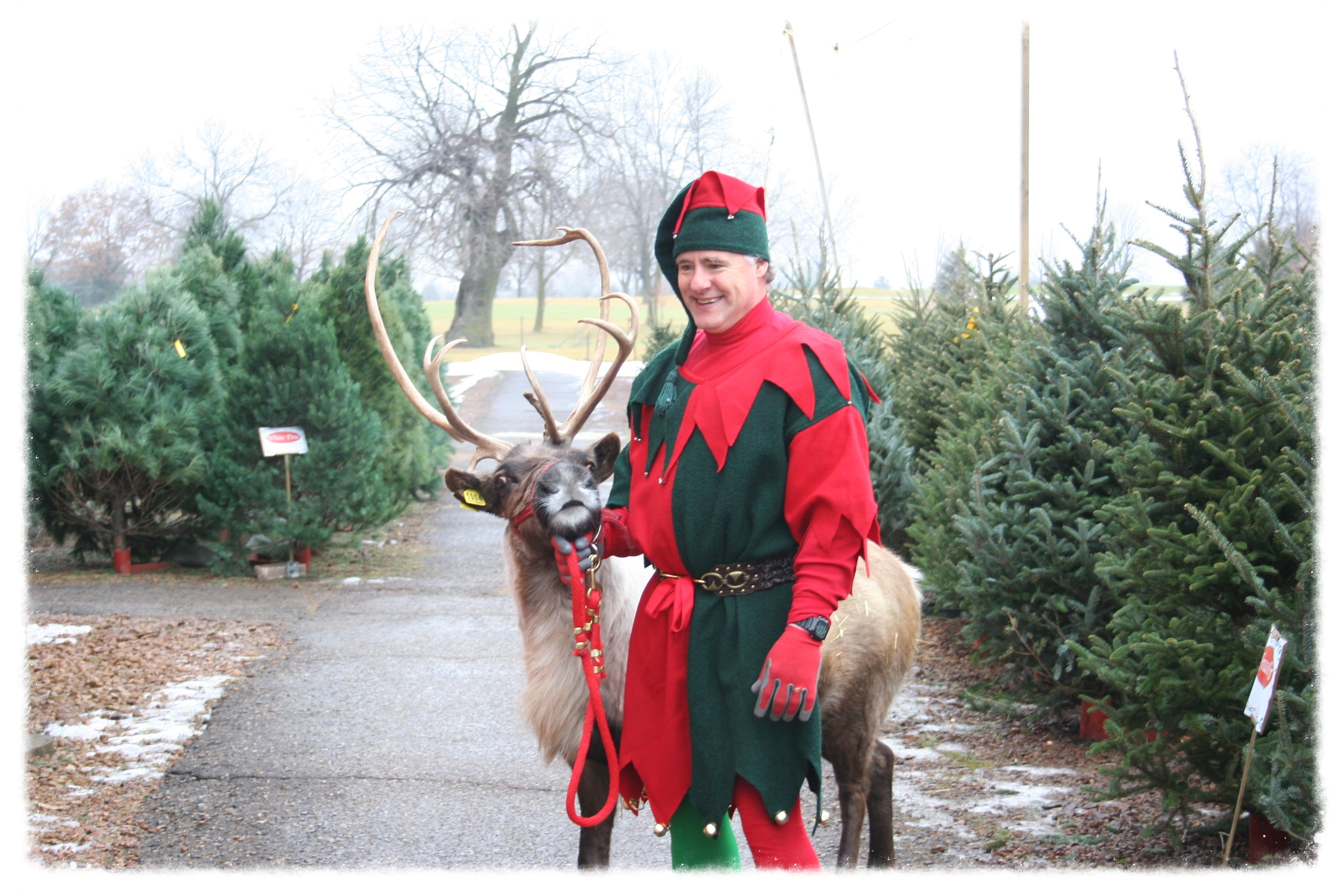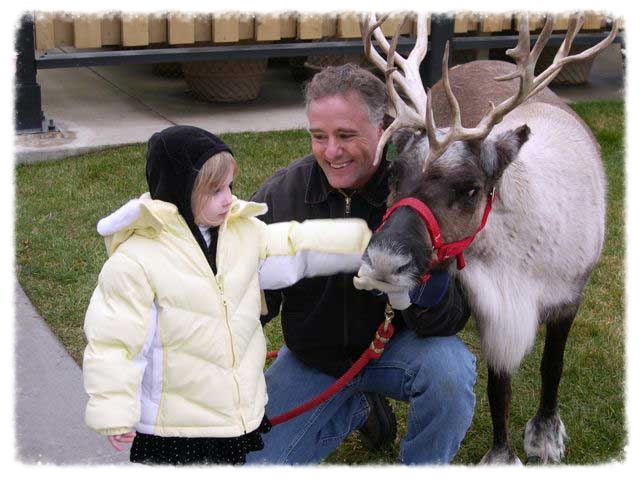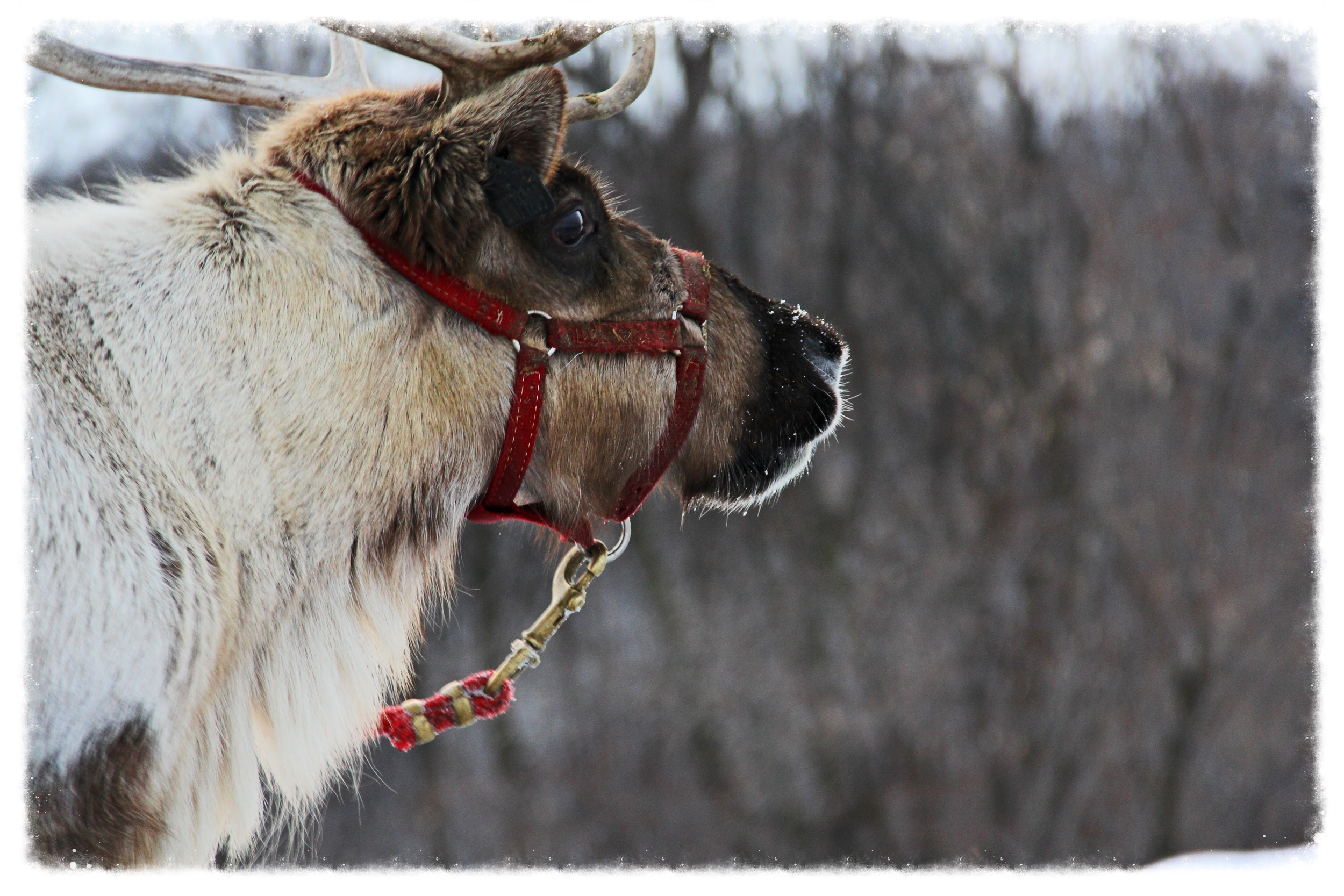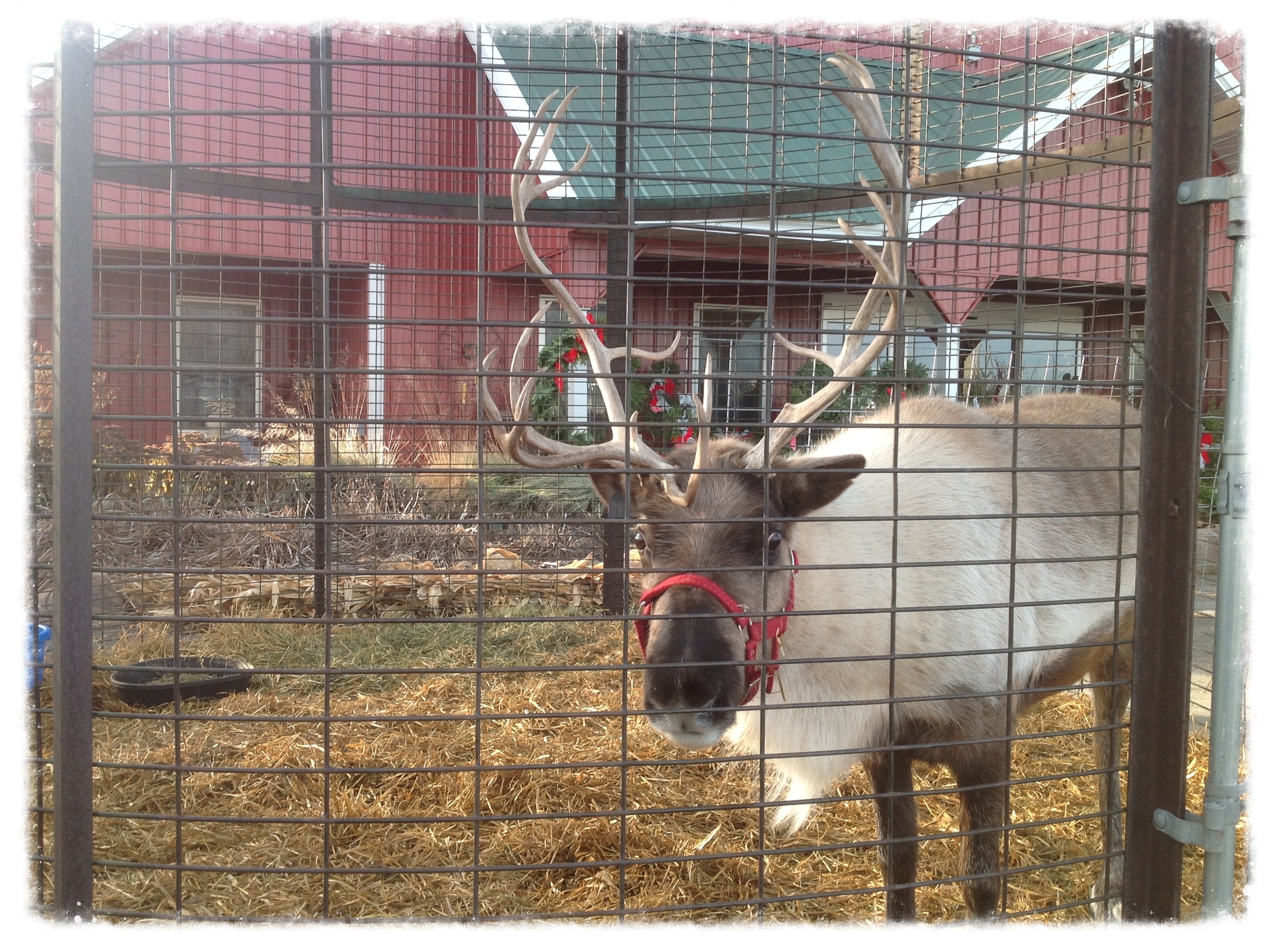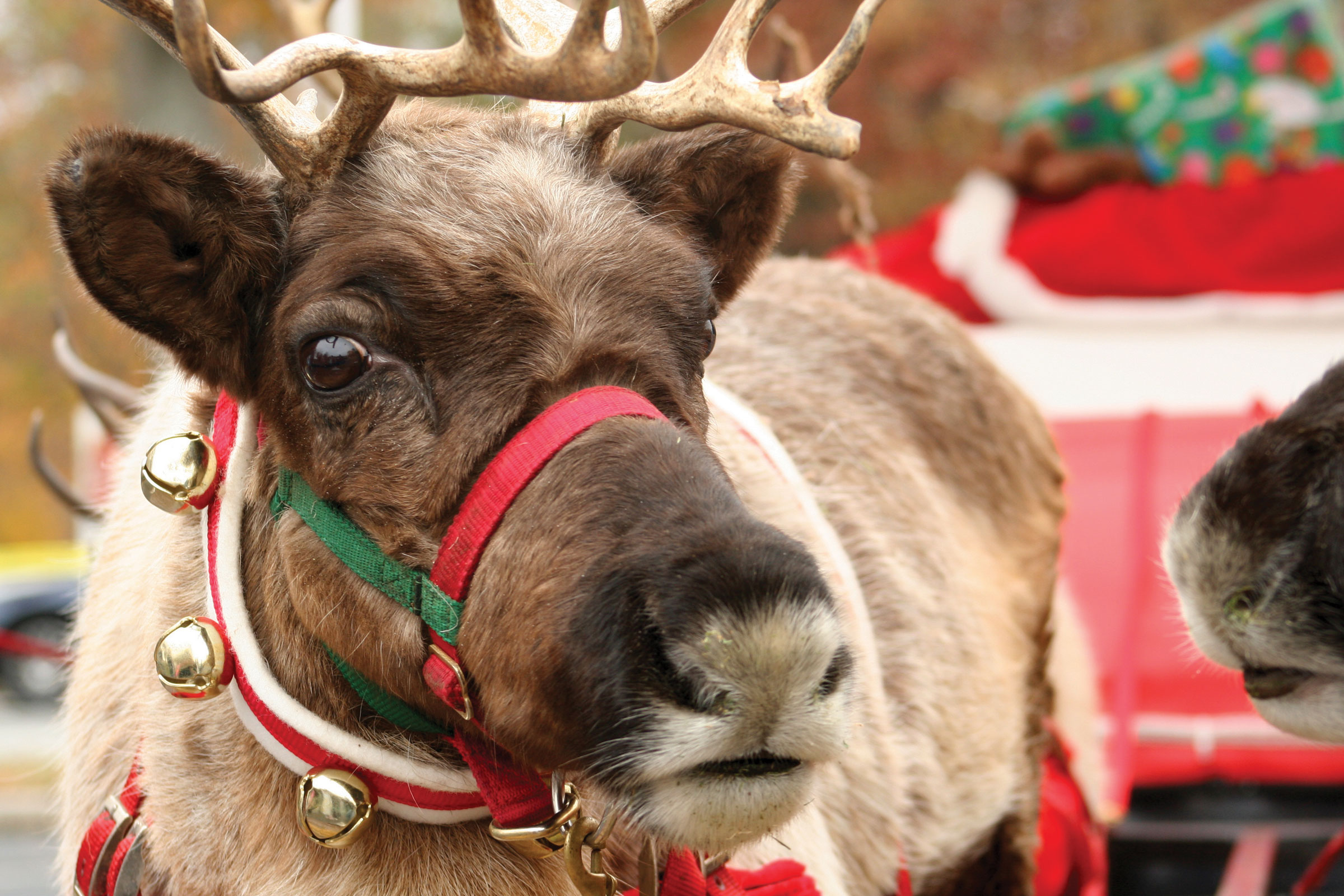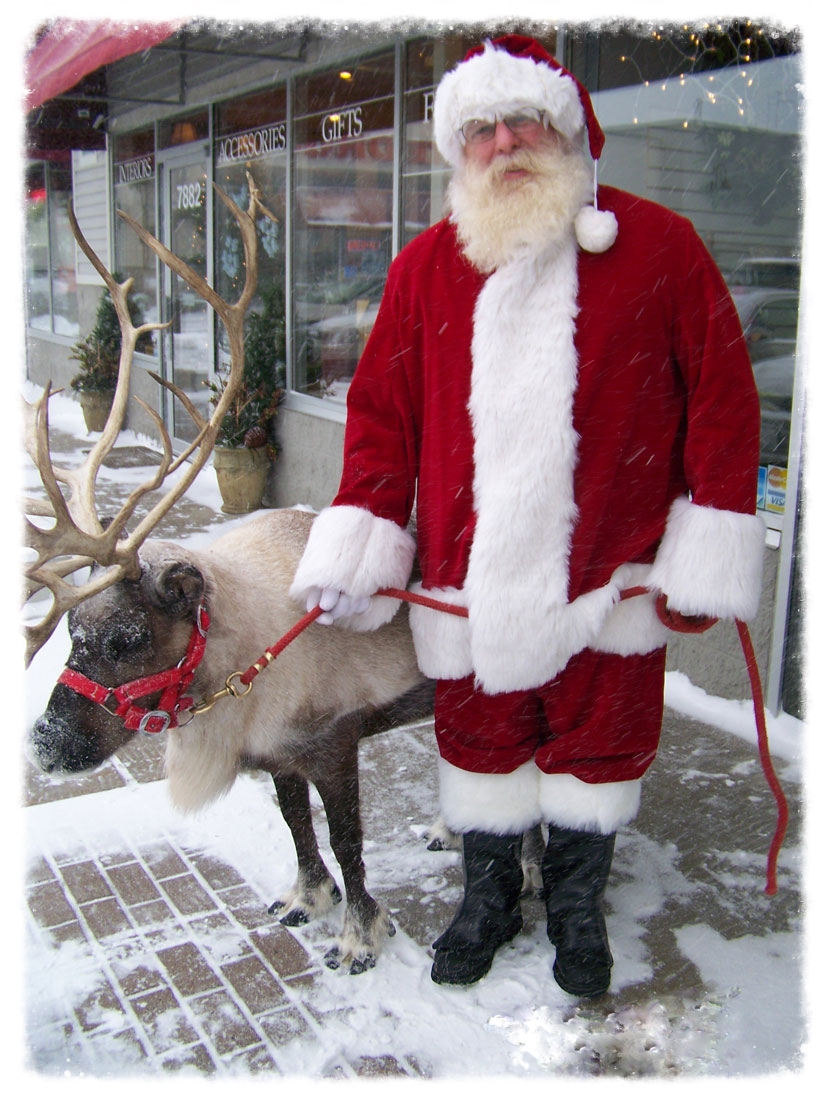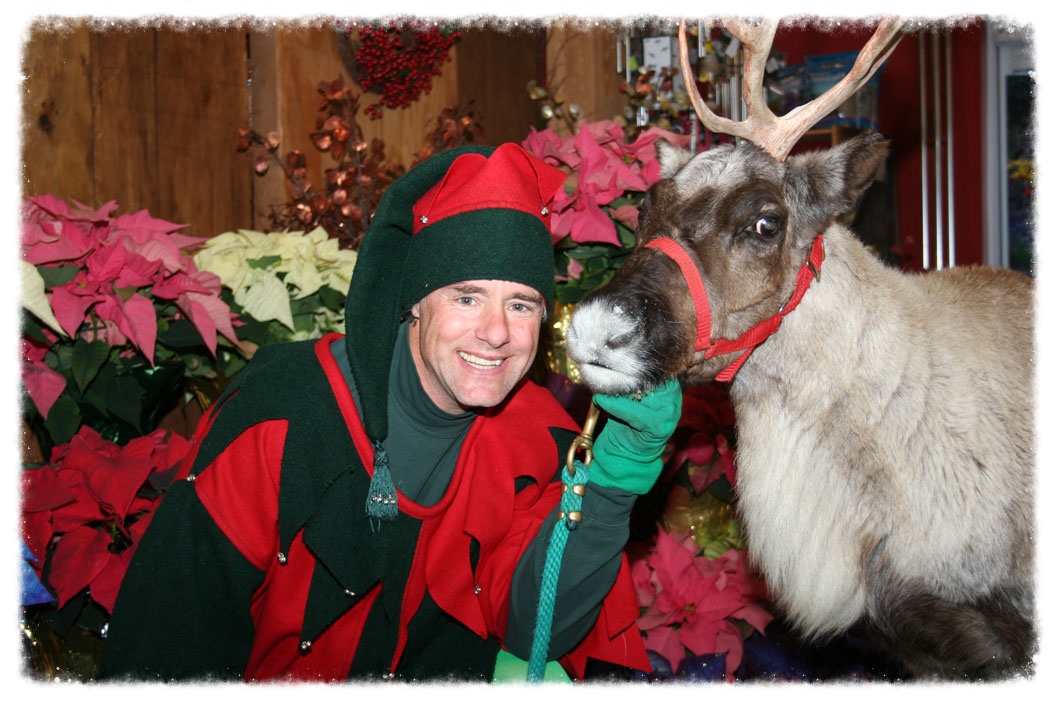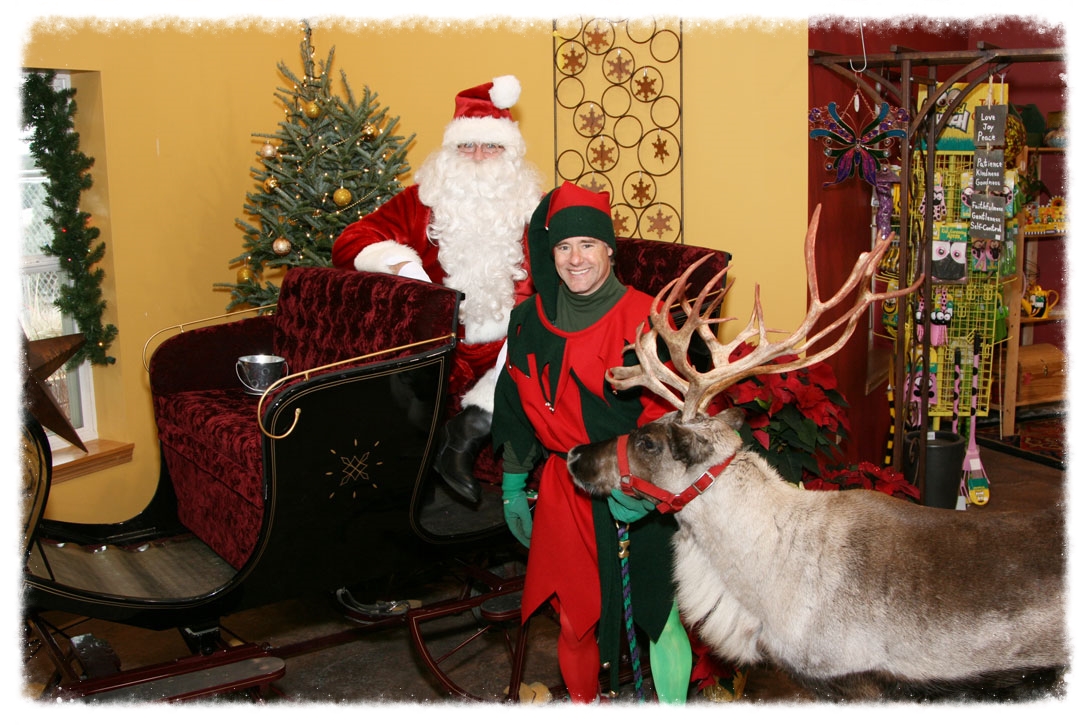Live Reindeer at The Mustard Seed!
Posted: November 04, 2017
Real Live Reindeer
Most Days through-December 23rd
Bring your whole family to See Brita, one of Santa's Reindeer and Nacho the mini donkey while you pick out your Christmas tree!
You can also see Nacho's mom Cocoa Puff and Molly on weekends! Britta was born April 30th 2015 and Nacho was born May 10th 2015 (Mothers day)
Reindeer Facts
Reindeer Facts
Reindeer are cousins of Caribou. In Europe they are called Reindeer all the time. In America we called them Caribou in the wild species. Reindeer developed in the Tundra regions of Europe and Asia and have been domesticated for 5,000 – 7,000 years or more. Caribou developed in the tundra regions of North America, the bulls are much larger than Reindeer bulls, and are not domesticated.
Scientific Name: Rangifer Tarandus.
Reindeer live in the Northern parts of North America including Canada and Alaska also in Europe, Russia and Greenland. Lets us not forget with Santa at the North Pole.
They live on tundras. A tundra is a vast flat, treeless Arctic Region.
Reindeer are herbivores meaning they are plant eaters.
They eat lichen a type of moss, grass and plants.
A reindeer can live up to 15 years in the wild.
A reindeer has brown soft fur with white fur on their neck and parts of their back.
They can weigh anywhere between 240-700 pounds.
Reindeer are usually 4-5 ft tall not including their antlers. Their antlers are 3ft tall!
Did you know that reindeer are the only deer in which both male and females grow antlers. They shed their antlers in the winter.
Like a human’s fingerprint no two reindeer antlers are exactly the same.
Caribou migrate, during the winter reindeer’s migrate South. During the summer they migrate North. The trip is 1,200 miles roundtrip. That is one of the world’s largest migrations.
Their hooves are used to dig for food in the snow. The outer edges of their hooves are sharp while help them walk on ice and rocks.
Did you know that reindeer can run 50 miles per hour!
A male reindeer is called a Bull.
A female reindeer is called a Cow
A baby reindeer is called a Calf
A mother usually gives birth to one fawn a year but sometimes two are born.
A calf is usually 8-18 pounds when born.
A reindeer’s milk has more fat than cow’s milk.
Can you name all of Santa’s Reindeer?
Dasher, Dancer, Prancer, Vixen. Comet, Cupid, Donner, Blitzen and we can’t forget Rudolph
More Interesting Facts About Reindeer
1. In Europe's Reindeer Age 16,000 years ago, reindeer were abundant. Primitive humans relied heavily on them for their skins to keep them warm, meat to sustain them, and bones to create tools.
2. Reindeer are the only type of deer in which both male and female reindeer have antlers. Female reindeer retain their antlers until they give birth to their young in the spring. Keeping their antlers throughout the winter ensures they are able to compete for food while pregnant. Male reindeer shed their antlers each winter.
Reindeer are the only mammals that both sexes grow new sets of antlers annually.
3. Reindeer eat certain types of lichen that grow in sub-arctic climates. These plant materials help to keep their blood warm so that they can survive the icy winters.
4. The largest reindeer species, the Finnish forest reindeer, measures approximately 240 centimeters in length from snout to tail. Finnish forest reindeer have longer legs than other reindeer species. They have adapted to forest life by evolving with wide hooves, which help them dig through the snow for lichen, and antler pairs that grow closer together than those of other reindeer sub-species. These differences help Finnish forest reindeer move through woodlands unobstructed.
5. To the Sami, the indigenous people of northern Finland, reindeer are important animals both in their culture and for sustenance. They have approximately 400 words for the food, tools and other products and parts taken from reindeer.
6. In Finland, reindeer herding and husbandry are occupations only residents to the area can employ. In other parts of Scandinavia, reindeer husbandry is restricted to indigenous people.
7. Male reindeer have much louder calls than females, especially during rutting season. When bellowing is necessary, they inflate a small pouch just under the skin of their throats.
8. Reindeer have a strong sense of smell, and it's that sense of smell that assist them in finding the lichen under the snow. They can sniff out the plant material easily, even through snow that is 60 centimeters deep.
9. Reindeer were built for the snow and cold. Their bodies react to changes in temperatures by making adjustments. When temperatures become frigid, they have the uncanny ability to lower the temperature in their legs to near freezing levels. This keeps their core body heat even.
For winter grazing they grow their facial hair long enough to cover their mouths, protecting their muzzles from the snow.
10. Reindeer are strong, energy-efficient running machines. A 20 pound new calf can outrun a man, and reindeer in general are more efficient than most other land mammals.

